Mulberry fruit comes from mulberry trees, Morus sp., and is related to figs and breadfruit.
Many gardeners grow this tree for their leaves, mainly in Asai and North America as they are the only food that silkworms eat.
Moreover, the tree carries colorful berries, most commonly in black, white, or red color, that is often made into fine, fruit juice, jam, or canned foods.
However, you can also choose to dry them and eat them as snacks.
Due to their sweet flavor, impressive nutritional value, and a number of health benefits, mulberry fruit is gaining popularity around the world.
Fresh mulberries consist of 88% water and have only 60 calories per cup or 140 grams.
By weight, they provide 9.8% carbs, 1.7% fiber, 1.4% protein, and 0.4% fat.
Keep on reading to learn more about Mulberry Fruit.
Mulberry Fruit
Mulberry is a medium-sized deciduous tree. It produces small but tasty fruit in summer.
There are two species that are found in North America: red mulberry Morus robus, a native to eastern North America.
And white mulberry, Morus alba, a native to China that is today widely naturalized in North America.
It is important to note that both the red and white species, along with the hybrids have dark green leaves with serrated edges and feature berries that like just like blackberries.
Moreover, white mulberry is a fast spreader and hybridized, so it is likely that the trees stain sidewalks and driveways with the mulberry fruits.
Regardless of this, mulberry fruits of all types make acceptable landscape additions as long as you select and care for them properly.
Mulberry trees are best planted in the early spring and tend to grow quickly.
However, it is important to note that the leaves and unripe fruit of mulberry contain latex, which is mildly toxic to humans.
Quick Facts about Mulberry Fruit
Some quick facts about mulberry fruit are:
| Common Name | Mulberry tree, red mulberry, white mulberry |
| Botanical Name | Morus spp. |
| Plant Type | Deciduous tree |
| Mature Size | 30–60 ft. tall, 20–40 ft. wide |
| Sun Exposure | Full, partial |
| Soil Type | Rich, moist but well-drained |
| Soil pH | Mildly acidic to neutral |
| Bloom Time | Spring |
| Flower Color | Yellowish-green |
| Hardiness Zone | 4–8 (USDA) |
| Native Range | North America, China |
| Toxicity | Leaves, unripe fruit mildly toxic to humans |
Mulberry Fruit Care
It is important to note that mulberry trees are easy to grow, however, they do suit every garden.
For a lot of people, it will be ideal to pick one of the seedless and fruitless cultivators available.
These include Morus alba ‘Chapparel’ which is a weeping variety, and Morus alba ‘Kingan’, a drought-resistant cultivator that is suitable for some drier regions.
Moreover, it is important to bear in mind that mulberry fruits and trees have very prolific, fast-growing roots.
You will need to plant your tree away from important features like your foundation, driveway, or garage, and features like utility, septic, or sewage line.
This is because you would not want to risk the roots damaging such important elements of your property.
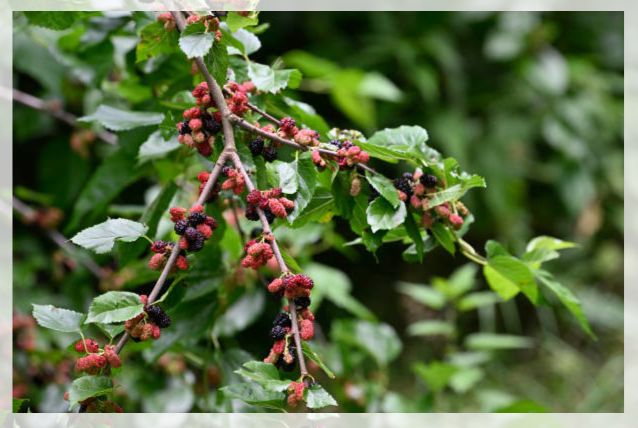
You should also take the mature height of the tree into consideration and pick a spot where you can keep it relatively free of pruning which can cause stress.
And led it to do the job of producing berries and enjoying the many fruits it tends to offer.
An important thing to note is that White Mulberry, a native of China is considered a seriously invasive plant in much of the Midwest in scatted locations elsewhere.
Thus, it is best to choose a sterile cultivator of fruiting trees whenever possible in such regions.
Controlling the spread of the fruiting tree is very difficult, as birds tend to readily spread the seeds after eating the fruit.
Light and Soil Requirements
It is important to note that mulberry trees tend to thrive in both full sun and partial shade conditions.
Though as with many fruiting trees, more light means more fruit.
Moreover, these trees are somewhat adaptable and can deal with clay, loam, and sandy soil easily.
However, make sure that the soil can maintain enough drainage.
These trees tend to thrive in a range of pH levels varying from neutral to mildly acidic.
Water, Temperature, and Other Requirements
You will need to water your plant deeply and regularly after planting it to help it establish a strong root system.
Experts recommend two to three gallons of water per week for the first year.
After the tree establishes, this tree is fairly drought tolerant though prolong dry weather can lead to a reduction in fruiting or earl dropping of the unripe berries.
Moreover, depending on the species, most trees are cold-hardy and can handle temperatures as low as 25 degrees Fahrenheit during dormancy.
They tend to produce the optimal fruit in regions where the growing season temperature is between 68 and 86 degrees Fahrenheit.
It is important to note that mulberry trees in most cases will do well with no fertilization.
Though they can also benefit from a yearly application.
Make sure to feed your plant once in late winter, with a balanced 10-10-10 mixture, and measure out 1 pound of fertilizer for each inch in the diameter of the truck.
Types of Mulberry Tree
There are 5 species of mulberry trees, three of which are most likely to be found in North America.
These are:
Morus Alba: This one is also known as the white mulberry tree.
This one is the most common tree found in North America and native to China that can be easily distinguished from the trees in the genus due to its blackberry-shaped fruit.
The fruit of this species begins white, however, darkens to purplish red.
You can find it in the nursery trade in several cultivators that are ornamental and sterile, thus making them suitable for landscape use.
Morus rubra: Native to North America, red mulberry has rough leaves that are twice as long as Morus alba.
Moreover, they feature a coarse hairy underside.
The fruit begins as light green and then turns to red or dark purple when ripe.
Red mulberry trees in most care are difficult to find in the nursery trade, however, you can also find them growing wild in Eastern Canada ad the U.S.
Morus nigra: Black mulberry trees that are about 40 feet tall and feature dark purple, almost black berries that are quite large when ripe.
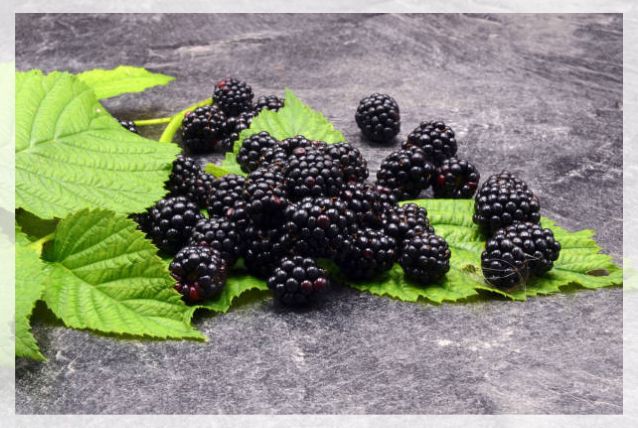
This native of Asia is not commonly found in North America.
Morus australis: This one is also known as Korena Mulberry.
This species is small, and reach only 20 to 30 feet at maturity and features light green foliage that is slightly glossed, and fruit ranges in color from white to deep red and purple.
It is important to note that this one is not a common landscape tree in North America.
Morus celtidifolia: Texan mulberry tree is native to the southwest and appears more like a shrub.
It grows to a maximum height of 25 feet.
The edible fruits are red, purple, or nearly black and are fantastic for drawing wildlife to your landscape, especially birds.
Pruning and Propagation Tips
You do not need routine pruning with a mulberry tree.
However, damaged or crossing shoots will need to be pruned away in late fall or winter while the tree is dormant.
This will help to avoid sap loss.
You can easily propagate mulberry trees by rooting semi-hard branch cuttings.
Here’s how you can do it:
- in spring as new growth is starting, cut about 6 to 8-inch long segments from the tips of 1/2-inch diameter branches
- make sure the branches are relatively new, however, not completely soft and green, cut them with sharp pruners
- dip the bottom of the cuttings in rooting hormone and plant the ends in a small pot filled with commercial potting soil or seed starter mix
- water the pot, place them inside 1-gallon clear plastic bags bound with rubber bands
- place the pot in a full shade location until they root, make sure to check periodically to make sure they remain moist
- when cutting roots, after about one month, you can take off the plastic bag and continue growing them in pots until fall, when you can plant them in the garden
It is important to note that not every cutting tends to root successfully, so it is a good idea to take at least four to five cuttings to increase your odds.
Growing from Seeds
It is important to note that you can easily grow mulberry frit and tress from trees.
It is evidenced by the rampant self-seeding they produce.
Fruit that you collect from the tree can be dried to collect seeds for planting.
Or you can simply wait for volunteers to spring up.
And carefully transplant them to new locations.
Potting, Repotting, and Overwintering
Container culture is not common for these plants as they are fast-growing plants and quickly get a size that is too large for most containers.
With that being said, if you want to prune often and willing to sacrifice the tree when it becomes too large after a few years, it is possible to grow mulberry in a large container for a sunny deck or patio.
Though the messy fruit can be hindernace in such locations.
Make sure to use ordinary commerical potting soil that you amend with enough compost, in the largest, widest ocntainer that is practical.
It is practical to begin with a large pot rather than repotting as the plant grows larger, as repotting is not very practical.
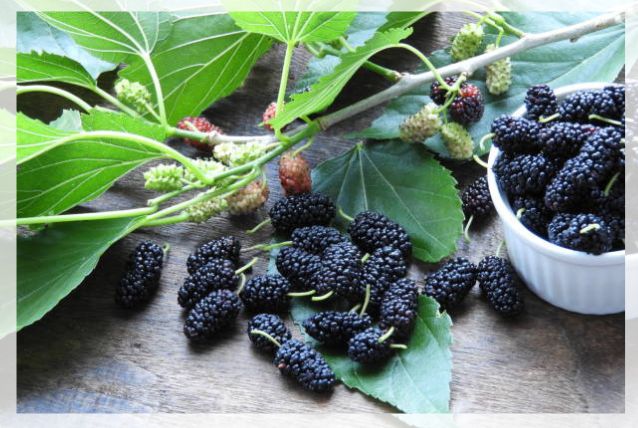
Make ure to water and feed more often when growing mulberry fruit in container.
For winter, try to move the potted tree to a slightly shelthered lcoation.
With metal shields or hardware cloth you can protect the trucnks of the young tree for the frist few years.
It will help shield from rabbits, deer, and other browsing animals that tend to gnaw on the bark.
After three years or so, the tree will be large enough to resist animal damage.
Routin flaa cleanup of fallen fruit is a good idea to reduce the rampant self-seeding.
Moreover, these hardy tree will need no protection agaisnt winter cold if you grow them within their accepted hardiness range.
Common Pests and Plant Diseases
Mulberry tree have to content with a number of pest isses.
These include:
- whitefly
- scale
- mealybug
However, the good news is that these bugs will not cause much damage ot mature tres, they are tough enough to withstand it, which is good.
As treating a large 50 foot tree is not an easy job.
If you notice any signs of infestation on vulnerable young sapling, you can apply a horticultre oil like neem oil.
Moreover, these trees are realtvitly free of disease problems,,though bacteiral and fungal leaf spots may, in some cases, occur.
Diseased parts should be removed when you notice them
Fungal diseases are rarely fatal and will require no treatment.
These trees are more likely to incur pest and disease issues in warmer climates.
How to Get Mulberry to Bloom?
In general cases, homeowners do not want to encourage mulberry trees to bloom.
This is because the flowers are not showy and they can lead to messy mulberry fruit that is of no use unless you want to harvest them for jams, jellies, or other recipes.
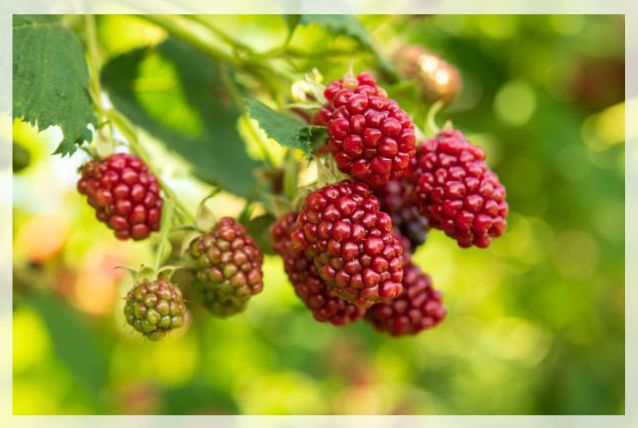
However, if you want to encourage blooming and fruit production, make sure that you meet the basic cultural needs of the tree.
These are plenty of sunlight, regular water, and annual fertilizing.
The most common reason for bloom/fruit failure on this tree is the lack of nutrients and late spring frost that can kill the flower buds.
Common Problems
The most mentioned issues with mulberry fruit and tree involve their messiness and invasive spread.
Stains from Fruit: The fertile, fruiting varieties of this tree are often a nuisance in urban environements as fallen fruit will stain pavements and cars.
And you can easily track the stains indoors.
To avoid this, you can plant one of the sterile cultivators that do not produce fruit.
If you do want the fruit for the benefit of feeding the birds or making jams, try to place it in an area of your yard where mulberry fruit will not create a mess.
Rampant Spread: It is important to note that this tree can spread easily through self-seeding.
Garden areas around a tree may see hundreds of volunteer seedlings, which if not immediately plucked, can quickly develop root systems that make the saplings hard to eradicate.
Moreover, if you have a fruiting mulberry tree, learn to recognize the seedlings and pluck them out as soon as they appear.
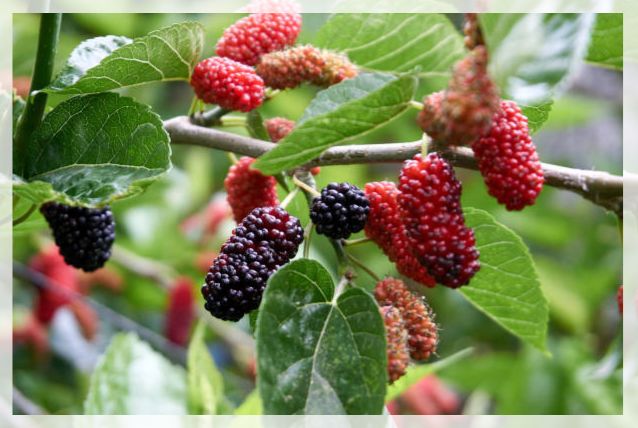





Leave a Reply